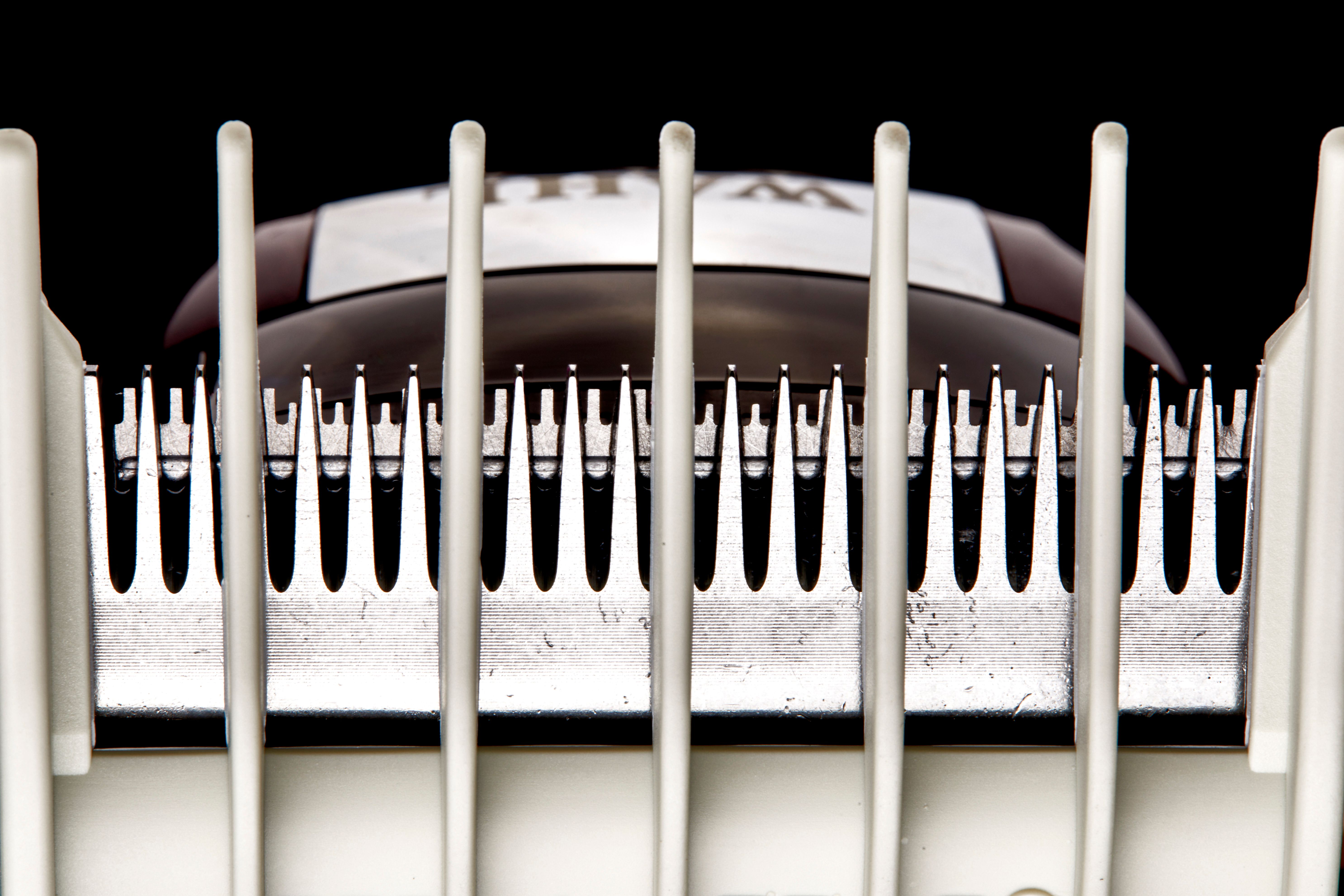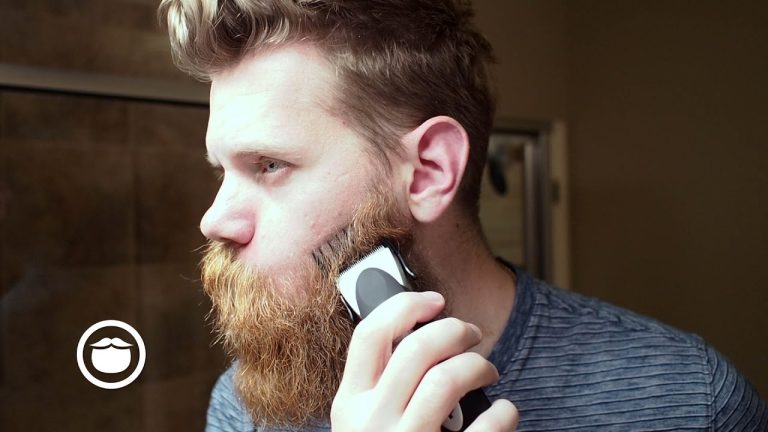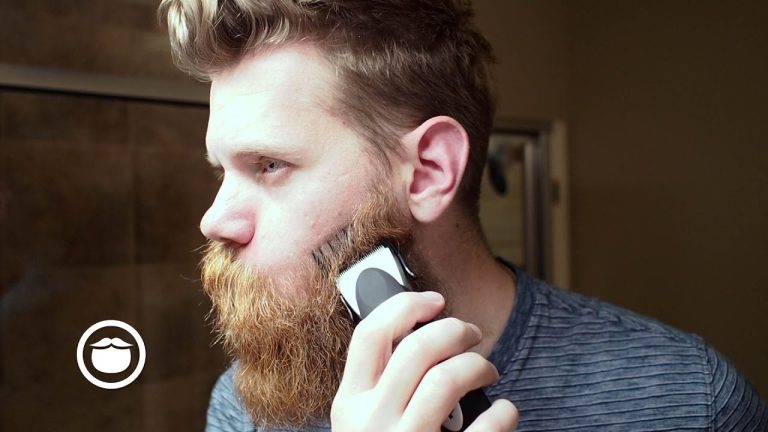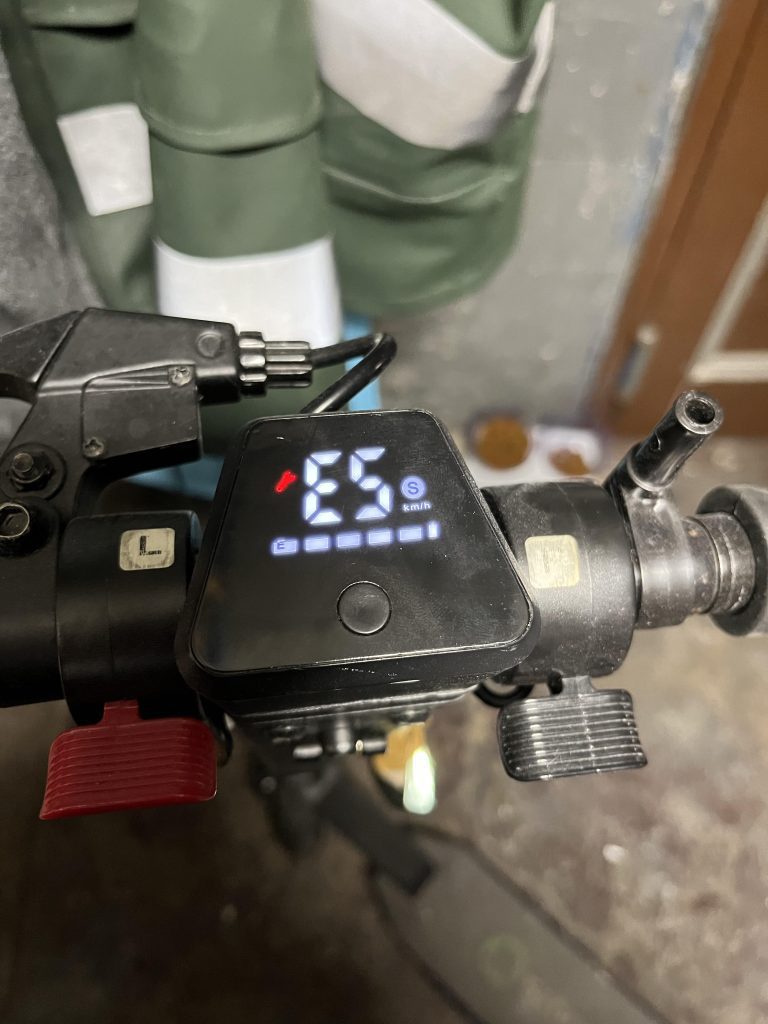How Long Do Beard Trimmer Blades Last?

Beard trimmer blades typically last for about six months to one year with regular use. Maintaining the longevity of beard trimmer blades is essential for maintaining a well-groomed appearance.
Regular cleaning and oiling of the blades can significantly prolong their lifespan. However, it’s important to keep in mind that the durability of the blades can also vary depending on the quality of the trimmer and the frequency of use.
We will discuss the factors that affect the lifespan of beard trimmer blades and provide some tips on how to ensure they last as long as possible. So, if you want to know how long your beard trimmer blades can last and how to extend their lifespan, keep reading.
Factors Affecting The Longevity Of Beard Trimmer Blades
When it comes to maintaining a well-groomed beard, having a reliable beard trimmer is essential. One crucial aspect that determines the performance of a trimmer is the longevity of its blades. While the lifespan of beard trimmer blades may vary, certain factors can significantly impact how long they last. In this article, we will explore the key factors that affect the longevity of beard trimmer blades, including the quality of materials used in the blades, frequency of use and maintenance, and the type and thickness of facial hair.
Quality of materials used in the blades
The quality of materials used in beard trimmer blades plays a vital role in determining their longevity. Generally, blades made from high-quality stainless steel or titanium tend to be more durable and withstand regular use for an extended period. These materials are known for their strength and corrosion resistance, ensuring that the blades stay sharp and effective over time. Moreover, it is worth noting that blades with a coating of materials like carbon or ceramic can further enhance their performance and lifespan.
Frequency of use and maintenance
The frequency of use and the level of maintenance also affect how long beard trimmer blades last. If you use your trimmer regularly, the blades are more likely to experience wear and tear, and their lifespan may be shorter compared to those used less frequently. Similarly, proper maintenance practices, such as cleaning and oiling the blades regularly, can significantly extend their longevity. After each use, it is important to remove any hair or debris from the blades and apply a few drops of oil to keep them lubricated and prevent rusting. These simple maintenance routines can help ensure that the blades remain sharp and functional, ultimately extending their lifespan.
Type and thickness of facial hair
The type and thickness of your facial hair can also impact how long beard trimmer blades last. Different hair types require varying levels of cutting force, which can exert different levels of strain on the blades. For instance, if you have coarse or thick facial hair, the blades may wear out more quickly due to the increased resistance during the trimming process. On the other hand, if you have fine or thin facial hair, the blades may last longer as they encounter less resistance. Understanding your hair type and adjusting the blade’s settings accordingly can help optimize their lifespan.
Dullness And Ineffectiveness
One of the common issues that beard trimmer users may encounter is the dullness and ineffectiveness of the blades. Over time, the sharpness of the blades can diminish, resulting in poor trimming performance and an unsatisfactory grooming experience. It is important to understand how to identify when the blades are becoming dull and the impact it can have on the trimming performance.
How to identify when blades are becoming dull
Recognizing signs of blade dullness is crucial to prevent a subpar trimming experience. Here are a few ways to identify when the blades of your beard trimmer are becoming dull:
- Reduced cutting efficiency: As the blades lose their sharpness, you may notice that the trimmer is no longer cutting through the hair as effortlessly as before. It may require multiple passes over the same area to achieve the desired length, resulting in frustration and uneven trimming.
- Pulling or tugging sensation: Dull blades can cause a pulling or tugging sensation on your facial hair while trimming. This discomfort is a clear indication that the blades are no longer sharp enough to glide smoothly through the hair without pulling it.
- Inconsistent results: If you notice inconsistencies in the length or smoothness of your beard after trimming, it could be a sign of dull blades. Dull blades are unable to provide the precision required for even and precise trimming.
Impact on trimming performance
The dullness of beard trimmer blades can significantly impact the overall trimming performance, resulting in various issues:
- Uneven trimming: Dull blades may leave some areas of your beard longer than others, resulting in an uneven and unkempt appearance. Achieving a well-groomed look becomes increasingly difficult when the blades are not sharp enough to provide consistent cutting.
- Increased irritation: As dull blades struggle to cut through the hair, they can unintentionally pull or snag at the hair follicles. This can lead to increased irritation, redness, and discomfort during and after trimming.
- Time-consuming: Inefficient blades require more time and effort to achieve the desired trimming results. Multiple passes over the same spot may be necessary, prolonging the grooming process and potentially causing frustration.
To ensure optimal trimming performance, it is essential to regularly check the sharpness of your beard trimmer blades and replace them when needed. Keeping the blades sharp not only enhances the quality of your grooming experience but also maintains the appearance of a well-manicured beard.
Increased Irritation And Skin Sensitivity
When it comes to beard grooming, maintaining a sharp and well-functioning beard trimmer is essential for a comfortable experience. Dull blades not only compromise the neatness and precision of your trim but can also lead to increased irritation and skin sensitivity. Understanding the relationship between dull blades and these uncomfortable side effects is crucial in ensuring a pleasant trimming process.
The Relationship between Dull Blades and Skin Irritation
As beard trimmer blades become dull over time, their cutting efficiency decreases. This means that instead of cleanly cutting through hairs, dull blades tend to tug and pull on the hairs, causing various discomforts to the skin. When hairs are not cut cleanly, they can become caught in the blades, leading to pulling and tugging sensations, resulting in skin irritation. Moreover, when the blades are blunt, they may cause uneven trimming, which can leave behind tiny hair fragments that irritate the skin, leading to redness, itchiness, and even razor burn.
Tips for Minimizing Discomfort during Trimming
To ensure a comfortable trimming experience and minimize skin sensitivity, there are several tips and practices you can follow:
- Regularly Replace Blades: It is recommended to replace the blades of your beard trimmer every 6 to 12 months, depending on usage. This ensures that you always have sharp blades that can effectively cut through hairs without causing unnecessary irritation.
- Clean and Oil the Blades: Keeping the blades clean and properly lubricated helps maintain their sharpness and functionality. After each use, clean the blades using a brush or a cloth, removing any hair or debris. Additionally, apply a few drops of beard trimmer oil to the blades to keep them lubricated and prevent friction during trimming.
- Trim in the Direction of Hair Growth: Trimming against the direction of hair growth can lead to more irritation. To minimize discomfort, always trim your beard in the direction that the hair naturally grows.
- Use Pre- and Post-Trimming Products: Applying pre-trimming products, such as beard oil or pre-trim moisturizers, can help soften the hairs and reduce friction during the trimming process. Similarly, after trimming, use soothing post-trim products, like aftershave balms or moisturizers, to calm and hydrate the skin, further reducing the chances of irritation.
- Take Your Time: Rushing through the trimming process increases the likelihood of uneven trimming and skin irritation. Take your time, move the trimmer gradually, and make small adjustments to achieve the desired results without compromising your skin comfort.
By following these tips, you can minimize discomfort during trimming sessions and maintain healthy and irritation-free skin. Remember, using a sharp and well-maintained beard trimmer will not only ensure that your beard looks its best but also prevent unnecessary skin sensitivity and irritation.

Credit: nymag.com
Regular Cleaning And Lubrication
Regular cleaning and lubrication are essential practices for prolonging the lifespan of your beard trimmer blades. By keeping the blades clean and well-maintained, you can ensure optimal performance and prevent damage. In this section, we will explore the importance of keeping blades free from debris and buildup, as well as recommended cleaning and lubrication techniques.
Importance of keeping blades free from debris and buildup
It is crucial to keep your beard trimmer blades free from debris and buildup to maintain their sharpness and functionality. Over time, hair clippings, product residues, and dust can accumulate on the blades, causing them to become dull and less effective. This buildup can also lead to clogging, resulting in an uneven and inefficient trimming experience. By regularly cleaning your blades, you can prevent these issues and ensure a smooth and precise trim every time.
Recommended cleaning and lubrication techniques
To keep your beard trimmer blades in optimal condition, it is essential to follow the recommended cleaning and lubrication techniques. Here are some steps you can take to maintain your blades efficiently:
1. Clean after each use: After each trimming session, take a few minutes to clean your beard trimmer blades thoroughly. Use a small brush or a toothbrush to remove any hair clippings, dust, or debris that may have accumulated. Be sure to reach all the nooks and crannies of the blades to ensure a thorough cleaning.
2. Use a mild cleaning solution: For a more thorough cleaning, you can use a mild cleaning solution specifically designed for beard trimmers. Mix a small amount of the cleaning solution with warm water, and dip a soft cloth or a cotton swab into the mixture. Gently wipe the blades to remove any stubborn debris or buildup. Avoid using harsh chemicals or submerging the trimmer in water, as this can damage the blades and other components.
3. Lubricate the blades: Regular lubrication is vital to maintain the smooth operation of your beard trimmer blades. Apply a few drops of lubricating oil to the blades after cleaning to prevent friction and keep them running smoothly. Be sure to use a lubricant designed specifically for beard trimmers, as other oils may cause damage. Check the manufacturer’s instructions for the recommended type and method of lubrication.
4. Store properly: After cleaning and lubricating your beard trimmer blades, store them in a dry and safe place. Avoid leaving the trimmer in damp or humid environments, as moisture can lead to rust and damage. Storing the trimmer properly will help prolong the lifespan of the blades and ensure they are ready for the next use.
By incorporating regular cleaning and lubrication into your beard trimmer maintenance routine, you can extend the lifespan of your blades and enjoy a consistent and precise trimming experience. Make sure to follow these recommended techniques to keep your trimmer in optimal condition for years to come.
Proper Storage
Properly storing your beard trimmer blades is essential for their longevity and performance. By taking a few simple steps, you can ensure that your blades stay sharp and in optimal condition for a long time. Here, we will discuss how to protect your blades when not in use and share the best practices for maintaining their sharpness.
How to protect blades when not in use
When your beard trimmer is not in use, it is crucial to protect the blades from damage and wear. Here are a few tips to help you keep your blades in top shape:
- Keep the blades clean: Before storing your beard trimmer, make sure to clean the blades thoroughly. Use a small brush or a cotton swab to remove any loose hair or debris that may have accumulated during use. This will prevent the blades from becoming clogged and reduce the risk of damage over time.
- Apply a thin layer of oil: After cleaning the blades, applying a thin layer of oil can help prevent rust and corrosion. This will not only protect the blades but also ensure smooth operation when you use the trimmer next time. Wipe off any excess oil with a cloth before storing to avoid attracting dirt or dust.
- Use a protective cover: Investing in a protective cover or case for your beard trimmer can provide an extra layer of protection for the blades. Look for a cover that fits your trimmer well and provides adequate cushioning to prevent any accidental damage.
Best practices for maintaining blade sharpness
Maintaining the sharpness of your beard trimmer blades is vital for achieving a precise and comfortable trim. Here are some best practices to keep in mind:
- Regularly lubricate the blades: Lubricating the blades regularly can help reduce friction and prevent them from becoming dull. Follow the manufacturer’s recommendations for lubrication intervals and choose a high-quality lubricant specifically designed for trimmer blades.
- Avoid excessive pressure: Applying excessive pressure while trimming your beard can lead to premature blade dullness. Let the trimmer do the work and use gentle and controlled movements to achieve the desired length. This will prolong the sharpness of your blades and prevent unnecessary strain on the motor.
- Store in a dry and dust-free environment: Moisture and dust can cause damage to the blades and affect their performance. Store your beard trimmer in a dry and dust-free environment to prolong its lifespan. Consider using a cabinet or a dedicated storage box to keep it protected.
By following these proper storage and maintenance practices, you can extend the lifespan of your beard trimmer blades and ensure an optimal trimming experience every time. Taking a few extra steps to protect and maintain your blades will not only save you money in the long run but also give you a well-groomed and tidy beard.
Blade Replacement And Sharpening
Blade replacement and sharpening are essential maintenance tasks for ensuring your beard trimmer performs at its best. Over time, the blades on your trimmer can become dull, rendering them less effective and precise. In this section, we will explore the signs that indicate your blades need to be replaced, as well as alternatives to replacement, such as professional sharpening.
Signs that blades need to be replaced
Knowing when to replace your beard trimmer blades is crucial to maintaining a well-groomed and comfortable beard. Here are a few key signs to keep an eye out for:
- Ineffectiveness: If you notice that your trimmer is not cutting as efficiently as before, leaving behind longer or uneven hair, it may indicate that the blades are wearing out.
- Pulling or Tugging Sensation: When your blades become dull, they can start to pull or tug on your hair during trimming. This can be quite uncomfortable and may lead to skin irritation.
- Damaged Blades: Inspect your blades for any visible signs of damage, such as dents or nicks. Damaged blades can impact the trimming experience and may even cause injury.
- Rust or Corrosion: If you notice any rust or corrosion on your trimmer blades, it’s time for a replacement. Rusty blades not only affect performance but can also pose a risk to your skin.
If you come across any of these signs, it’s a strong indication that your beard trimmer blades require immediate attention. Continuing to use dull or damaged blades can lead to subpar results and potential skin issues.
Alternatives to blade replacement
While blade replacement is typically the most effective solution, there are alternatives to consider before investing in new blades. One option is professional sharpening, which involves sending your trimmer blades to a trusted sharpening service. These experts are equipped with the necessary tools and knowledge to restore your blades to their original sharpness.
Professional sharpening can be a cost-effective alternative, especially if your trimmer’s blades are in good condition aside from dullness. However, it’s important to research and choose a reputable sharpening service to ensure the best results.
Whether you opt for blade replacement or professional sharpening, regular maintenance is essential to keep your beard trimmer in optimal working condition. Always refer to the manufacturer’s guidelines for specific instructions on proper care and maintenance.
By staying proactive and attentive to your beard trimmer’s blades, you can enjoy precise and comfortable grooming, ensuring your beard always looks its best.
Frequently Asked Questions Of How Long Do Beard Trimmer Blades Last
How Often Do You Need To Change The Blade On A Beard Trimmer?
The blade on a beard trimmer should be changed regularly for optimal performance. It is recommended to change the blade every 6-12 months, depending on usage frequency. It ensures a closer and smoother trim while preventing skin irritation. Regular blade maintenance is essential for maintaining a well-groomed and tidy beard.
How Often Do You Need To Replace Trimmer Head?
The recommended frequency for replacing a trimmer head depends on factors such as usage and maintenance. However, it’s generally advised to replace the trimmer head every 1-2 years to ensure optimal performance and efficiency.
How Do I Know If My Clipper Blades Are Dull?
To determine if your clipper blades are dull, observe if they are not cutting hair smoothly, snagging or pulling on hair, or causing discomfort to the animal. Dull blades may also leave uneven haircuts or cause excessive heat or noise.
What Is The Life Expectancy Of A Trimmer?
A trimmer’s lifespan varies depending on usage, maintenance, and brand reliability. On average, it can last between 5 to 10 years with proper care. Regular cleaning, timely oiling, and avoiding excessive strain can extend its durability.
Conclusion
Various factors, including usage frequency, maintenance, and the quality of the trimmer itself, influence beard trimmer blades’ longevity. Blades can last anywhere from six months to a couple of years. It is essential to regularly clean and oil the edges and replace them when they become dull or damaged. By practising proper maintenance and investing in high-quality trimmers, you can ensure the longevity of your beard trimmer blades and enjoy precise and effortless grooming for years to come.




